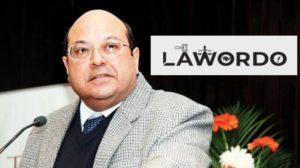Justice Rohinton Nariman On How Nani Palkhivala Influenced Constitutional Law
How Nani Palkhivala Influenced Constitutional Law – Justice Rohinton Nariman
The coincidence was how the famous jurist Nani Palkhivala got the chance to argue a portion of India’s milestone Constitutional cases, for example, the Golak Nath, Keshavananda Bharati, and Minerva Mills cases, Justice Rohinton Nariman said at the sixteenth Nani Palkhivala Memorial Lecture in Mumbai. Justice Nariman talked about Palkhivala’s contentions in these cases and how they prompted the advancement of Constitutional Law in India.

“On that day, MK Nambiar—a great constitutional expert—was on his legs. And Palkhivala was assured that Nambiar would sit down and allow him to address the court. Nambiar droned on and apparently, after an hour, when there was a barrage of questions, he said, I require some time to reflect and think. If you give me that time, Mr Palkhivala can step in. And that’s how Nani Palkhivala got to address this August body of 11 judges”. – Justice RF Nariman.
What Palkhivala contended that day was something like the essence of the constitution – The basic structure doctrine that was laid down—there are implied confinements to the Parliament’s capacity to amend the Constitution, he said. Originally, the arguments were to be led by MC Chagla (the former jurist, diplomat and minister) who felt that the burden of the case will be too great. And so, he consulted CK Daphtary (India’s first Solicitor General) who also said no. And so, both of them said the only person who could be requested to do this was Nani Palkhivala. – “Justice Nariman”
Palkhivala contended for nearly 32 out of 66 days that the hearings continued for, he said. “What was in question currently was never again the Golak Nath case. All the 13 judges told Palkhivala—overlook Golak Nath; but argue on what the word amendment means,” Justice Nariman described. The center, Justice Nariman stated, moved to a suggested impediment or fundamental structure contention.
In the Keshavananda Bharati case, the 13-judge bench was supposed to answer if the Parliament could amend any part of the Constitution, even to the extent of taking away all Fundamental Rights.
